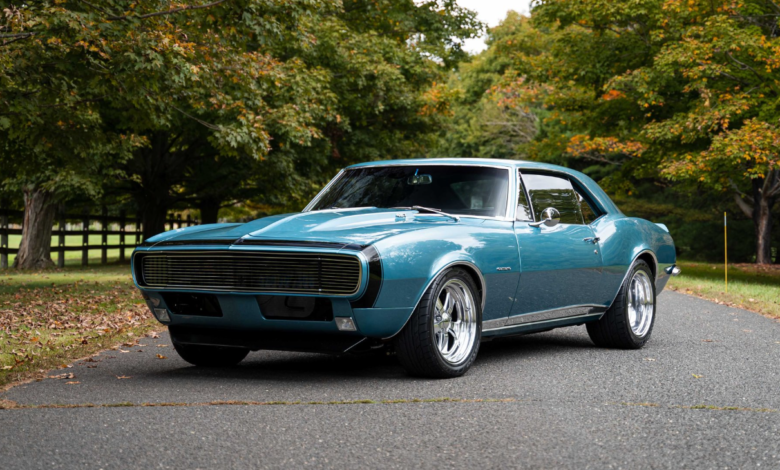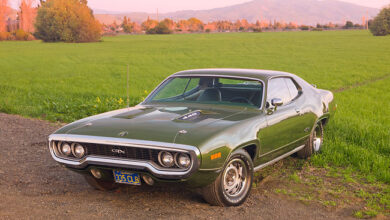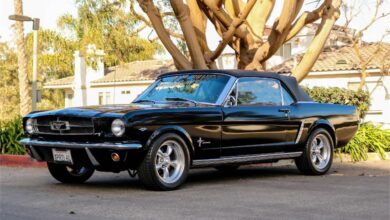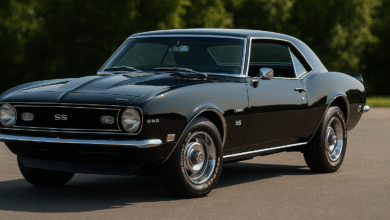Chevrolet Camaro (1967)

The 1967 Chevrolet Camaro: A Muscle Car Legend is Born
The 1967 Chevrolet Camaro holds a special place in American automotive history as Chevrolet’s response to the wildly successful Ford Mustang. Released as a sleek, performance-oriented alternative, the Camaro quickly established itself as a cornerstone of the muscle car era. Designed with both style and power in mind, the Camaro delivered thrilling performance, aggressive looks, and a wide range of customization options that made it a hit among enthusiasts and casual drivers alike.
Design and Styling
The 1967 Camaro made a bold statement with its low, wide stance, long hood, and short rear deck, reflecting the classic “pony car” proportions. Chevrolet offered the Camaro in both coupe and convertible body styles, allowing buyers to choose between a closed or open-air driving experience. The front grille featured a menacing look, complemented by rounded headlamps that gave the Camaro a distinctive face. The car’s sleek, muscular lines flowed to the rear, where stylish taillights and a subtle rear spoiler added to its performance-inspired appearance.
Chevrolet emphasized customization, offering a wide array of options to suit different preferences. Buyers could select from multiple trim levels, including the base model, the upscale RS (Rally Sport), and the high-performance SS (Super Sport). The RS package added features like hidden headlights and special exterior trim, while the SS model came with a more powerful engine and sportier accents.
Performance and Power
At its core, the 1967 Camaro was designed for performance, and Chevrolet provided a variety of engine options to meet the needs of different drivers. The base model came with a 230-cubic-inch inline-6 engine, which delivered a modest 140 horsepower—adequate for everyday driving. However, muscle car enthusiasts gravitated toward the more powerful V8 options.
The SS model featured a 350-cubic-inch V8 engine, producing 295 horsepower, which provided a thrilling driving experience. For those seeking even more power, Chevrolet offered the legendary 396-cubic-inch big-block V8, capable of 325 to 375 horsepower, depending on the configuration. This made the Camaro SS a formidable contender in the muscle car market, offering serious straight-line speed and acceleration.
The Camaro’s suspension system, steering, and braking capabilities were also designed to support its performance ambitions. Optional upgrades like front disc brakes and heavy-duty suspensions were available to enhance handling and control, making the Camaro more than just a straight-line performer.
The Z/28: A Legend is Born
One of the most significant introductions in the 1967 Camaro lineup was the Z/28 package. Originally designed for road racing and to meet Trans-Am Series homologation requirements, the Z/28 featured a high-revving 302-cubic-inch V8 engine, rated at 290 horsepower. While that figure seemed modest, the Z/28 was built for high-speed cornering and agility, making it a favorite among serious performance enthusiasts. Paired with a 4-speed manual transmission and upgraded suspension, the Z/28 was a true driver’s car and laid the foundation for future performance Camaros.
Legacy and Impact
The introduction of the 1967 Camaro marked the beginning of a long and storied legacy. Its immediate popularity and performance credentials quickly put Chevrolet on equal footing with Ford in the pony car wars. The Camaro not only took on the Mustang but also set the stage for an entire generation of muscle cars that dominated American roads throughout the late 1960s and early 1970s.
The Camaro’s blend of affordability, style, and power made it accessible to a wide range of buyers, from casual commuters to dedicated gearheads. Its success also led to its ongoing presence in Chevrolet’s lineup, with subsequent models refining and building upon the foundation laid in 1967.
Conclusion
The 1967 Chevrolet Camaro wasn’t just another car—it was a statement. With its eye-catching design, powerful engine options, and endless customization possibilities, it became an American automotive icon. The Camaro’s ability to combine style, performance, and affordability made it an instant classic, cementing its place in muscle car history. For those looking to capture the thrill of the open road in the 1960s, few cars could rival the power and presence of the 1967 Camaro.




